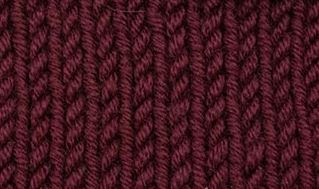This series on Yarn Ply from 2016 continues to get a lot of traffic, mainly through google search. I'm going to rerun it over the next month for those of you who are new to my blog. Also a reminder, there is a topic index at the top of the page if you are looking for older posts.
We've hit the point where my knowledge as a knitter isn't enough to fully explain some concepts.
These definitions come from Knitty, you can read the full article here.
First from Knitty's the definitions of Cable and Crepe:
"A basic crepe yarn is a 3-ply yarn made with a 2-ply and a singles. The 2-ply is spun Z in the singles and over plied S. The single is spun S with enough twist to make a regular balanced ply and plied Z with the original 2-ply. The yarn looks bubbly when it’s finished. The single traps the 2-ply which pushes out between the singles as it untwists and expands on its second ply.
A basic cable yarn is two 2-ply yarns spun Z in the singles and over-plied S in the first ply then plied together Z to finish. The yarn looks pebbly, like a bridge cable. On the second ply, the two 2-ply yarns lock together and bloom."
Once I started researching the meaning I got quite excited. I as a knitter had always wondered about those multi-strand yarns where the knit stitch in stocking stitch has obvious differences between the right and left leg. The left legs are more vertically aligned in a column and the right legs form a steep angle.
So what does this mean to us knitters? These are multi-stranded yarns which are then plied together again. The yarns are balanced and very strong. These yarns stand up to abrasion which occurs during wear. The yarn is less likely to pill. The fabric created is smooth with great stitch definition. The strand of yarn is very round when viewed in cross section. Many of these yarns are commercially made, often coming from Italian mills and they are frequently created from Merino wool. The Zara yarn pictured above is a well known example. The yarn is easy to knit with as it's less likely to split and it slides smoothly off of your needles. In the case of Zara it's a Superwash yarn which impacts it's nature as well.
And back to the reason for that right/left leg difference. It's due to the nature of the spinning method and the fibre. The fibres are elastic and crimped, while the plying is done with the strands held in a steep angle away from one another rather than in a more parallel manner.












No comments:
Post a Comment